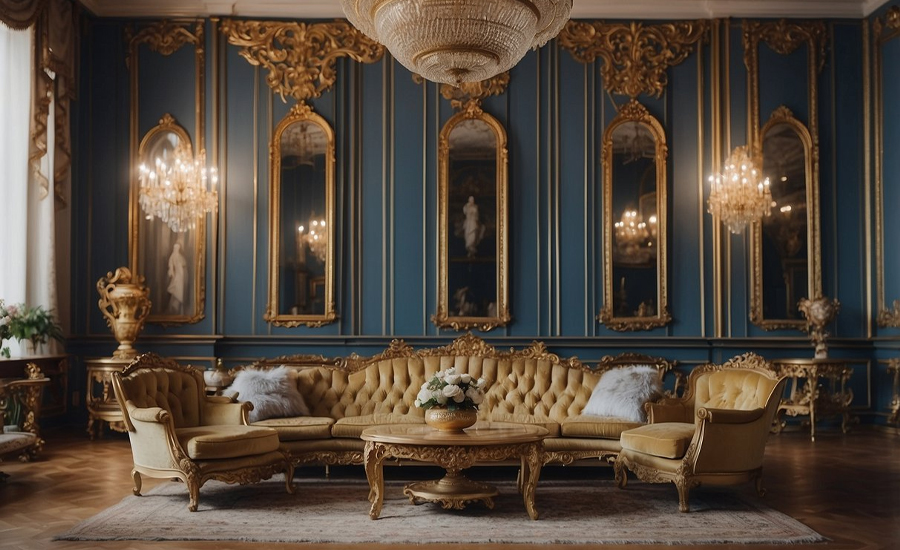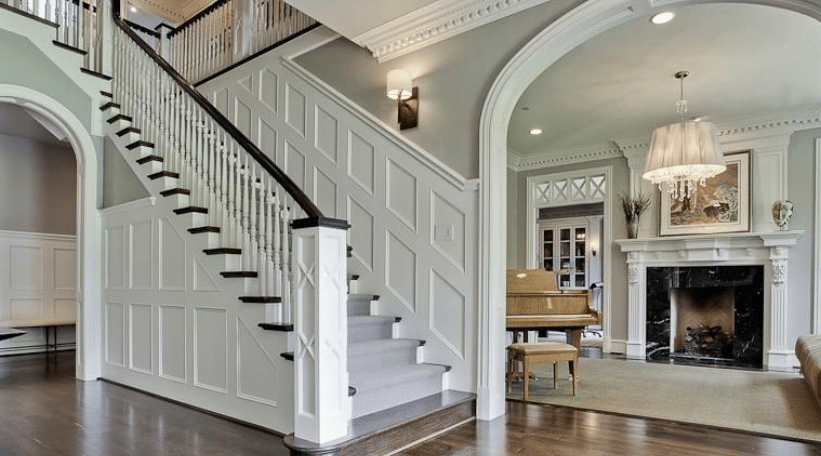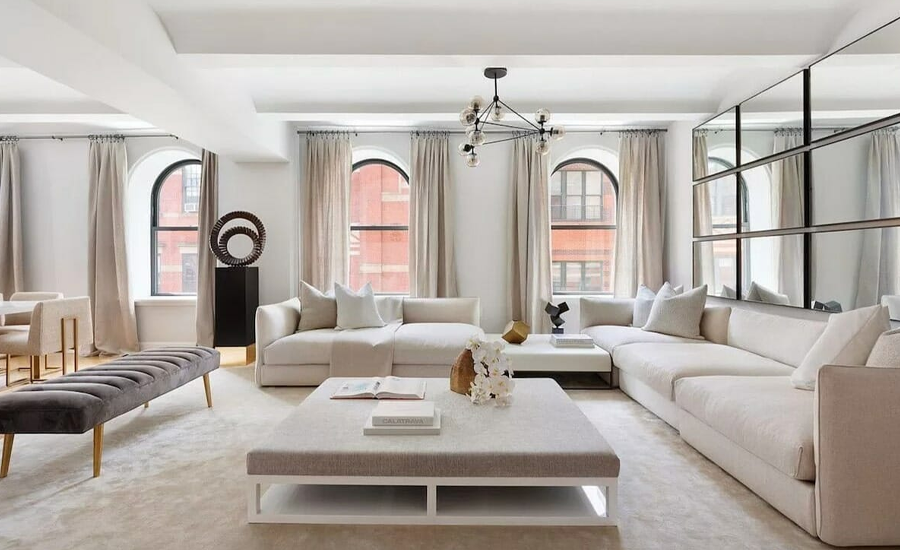What Material Makes Catherine The Great Furniture Iconic and Why Do People like it?
People celebrate Catherine the Great not only for her political and cultural achievements but also for her exceptional taste in furniture and interior design, as seen in the furnishings she commissioned. The furnishings she commissioned reflect her vision of a luxurious yet practical aesthetic, embodying her appreciation for elegance and functionality. Each piece ordered and assembled during her reign around the 18th century showcases intricate artistry, blending Russian and European influences. This combination of beauty and utility set her interiors apart and made them enduring symbols of her reign. This paper explores the unique materials and craftsmanship that gave Catherine’s furniture its timeless appeal and lasting legacy.
The Context of Catherine’s Era
Catherine ascended to the throne for a time, slowly coming out of its shadowy feudal past. The period witnessed great cultural and artistic development during her reign. Having been inspired by the Enlightenment, Catherine tried to modernize Russia and give it the beauty she found in Western Europe, especially France. This culminated in the furniture with a specific style—lavish usage of material, ornate works, and eclectic influences from the Baroque to the Rococo styles.
Materials that Define Catherine’s Furniture
Mahogany
One of Catherine’s finest furniture material resources is mahogany. Its fine grain, beautiful reddish-brown coloration, and fine, rich coloration proved durable. Thus, it was valued and popular at the time of Catherine as a mark of grandeur and class. As walnuts could hold high polish to great extents, intricate carving and inlays of artistry became its primary attraction.
Walnut
Walnut was another favorite for Catherine’s furniture. Darker shades and unique grain patterns gave these pieces an air of magnificence and glory. Artisans frequently employed walnuts for carving and detailed marquetry, thus enabling a great range of styles from plain and subtle to richly elaborate and ostentatious.
Lacquer
She favored lacquered furniture, whose designs were inspired by the East. Lacquer made it look more beautiful, helping it be protected better. Intricate designs could be floral or simply a scene from Russian folktales, and she loved art and culture.
Gilt Bronze and Gilding
Objects also were enhanced by the status afforded to them through gilt bronze embellishments and gilding. These items used gold-leaf adornments that seemed to cast a feeling of magnificence, especially upon mirrors, frames, and the edges of tables. The play of gold sparkle against the rich wood tones seemed to capture the light and draw attention to the craftsmanship.
Silk and velvet upholstery
Many of Catherine’s upholstery designs used luxurious fabrics like silk and velvet. These would both comfort the user and provide an avenue for art. Rich colors, patterns, and motifs told the tale of richness by including embroidery or gold stitching in most of these fabric pieces.
Porcelain and Glass
As a patron of the arts, Catherine believed in artistic decorations, which she further supported with furniture. Porcelain inlays and glass additions made the décor above par. Delicate porcelain and robust wood created contrast; hence, ingenuity in the period’s art was visible.
The Craftsmanship Behind the Furniture
The Furniture owned by Catherine was proof not only of material possessions but also of great craft. She hired master artisans who could handcraft items according to the standards of the empress. The carvings are of great detail; the inlays are precise, and so are the constructions.
Craft Techniques
The techniques used by artisans during this period were mostly inter-generational. Carving, marquetry, and inlays had skills that demanded patience and lots of time. Artisans spent hours carefully piecing together the materials to produce complicated designs that told stories and supposedly reflected the greatness of the Russian empire.
European Influence
Most of the Russian artisans were inspired by French and Italian designs. Once these influences were infused with Russian Furniture, the result became a distinct blend that gave the pieces a specifically Russian but cosmopolitan flavor. This unique blend gave Catherine’s Furniture its charm, making it a perfect fit for the taste of the European elite.
Handcrafted Design
Catherine would commission bespoke furniture specifically designed according to her needs and the architectural spaces within her palaces. In this respect, every piece of furniture created was functional yet in harmony with its surroundings, and the overall aesthetic quality of the interiors was augmented.
Cultural Significance of Catherine’s Furniture
Beyond its material and artistic merits, Catherine’s furniture has real cultural importance. It testifies to her reign and the larger socio-political landscape of 18th-century Russia.
Symbol of Power and Prestige
The Furniture in Catherine’s palaces was reflective of her powers and prestige. Each piece was chosen not only for its beauty but also as a status symbol. Catering to visitors by entertaining them in rooms with sumptuous decorations reinforced the image of Catherine as a mighty and sophisticated leader.
Cultural Exchange
Catherine had a great interest in Western culture. Indeed, how does the furniture collection by Catherine reveal the cultural influence shared between Russia and Europe? She inscribed Russia as a developing cultural center that embraces European cultures and connects East and West.
Legacy and Inspiration
Catherine’s Furniture’s legacy influences contemporary designers and collectors through elegance and craftsmanship. She has left an indelible mark on furniture design, influencing styles and trends long after her reign. Today, any reproduction or restoration of her furniture pieces draws much attention simply because they carry a rich historical narrative.
Why People like Cathmaiderine the Great Furniture?
Besides its historical importance, there are many other reasons people take an interest in the Furniture Catherine the Great made.
Breathtaking Beauty and Artistic Mastery
The Furniture produced by Catherine is simply outstanding in beauty, embodies the finest European craftsmanship, and carries Russian and French influences. Most feature stunning carvings are heavily gilded, and sometimes have inlays. This artistic mastery is most uncommon and highly treasured by collectors and enthusiasts.
Historical Value
It is fascinating to possess furniture or glimpse the pieces once owned by Catherine the Great, one of the most influential Russian leaders ever known. Catherine is a powerful ruler with cultural patronage, and her furniture is thus an extension of the history of Russia in the 18th century. It will interest history enthusiasts all over the world.
Style Fusion of Excellence
Most of her Furniture was a mixture of Russian and European styles, mostly French Rococo and Neoclassical, hence something unique. The intermingling of influences gives off an aesthetic that appeals to those who appreciate Europe’s elegance and Russia’s rich environment.
Delicate Materials and Ornaments
Catherine’s works used highly luxurious materials such as gold leaf, marble, rare woods, and semi-precious stones. The luxury itself did not just add beauty to the Furniture; it also evoked a show of her wealth and power, which many people find mesmerizing.
Association with the Enlightenment Era
She was renowned for being an admirer of Enlightenment principles, hence carried this aspect forward in her furniture. Most of her designs reflected her love for classical scholarship and beauty; thus, they are also intellectually appealing and aesthetically beautiful.
Allowable Influence on Interior Design
Catherine’s Furniture sets trends that have inspired designers for centuries. Her love for opulent and artistic design has influenced modern luxury furniture, making her pieces a blueprint for elegance and sophistication in interior decor even today.
Rarity and Value
The rarest pieces and the most expensive are from the Catherine period. Of course, their benefactors and museums consider them works of art rather than objects to be used—those pieces were so assiduously cultivated.
Conclusion
Catherine the Great Furniture—items more than just decorations; they are mirrors of a time, proofs of exceptional craftsmanship, and manifestations of cultural exchange. The special substance and art found in those pieces make those inimitable objects. Many people admire and look for furniture inspired by Catherine because it is beautiful to behold, historically valuable, and filled with stories. In discovering the legacy of this great empress, we find not only political achievements but also an indelible influence on the arts and design—the very exquisite furniture produced during her time.
Share this content:



